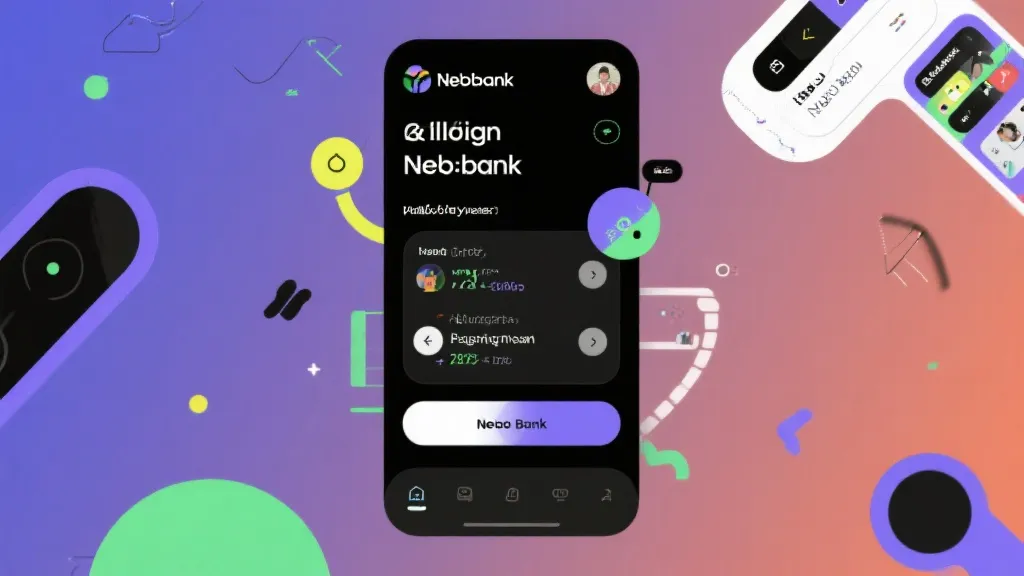In the rapidly evolving fintech landscape, understanding Webbank competitors is essential for both investors and consumers. Webbank operates in an environment characterized by innovative digital banking solutions, peer-to-peer lending, and competitive online financial services. In this article, we delve into the competitive dynamics, analyzing leading challengers and exploring how they shape the financial ecosystem.
Introduction to Webbank and its Position in Fintech
Webbank, an established player in the fintech space, offers a broad range of financial services primarily through digital platforms. Its footprint in the world of online banking and lending is significant, underpinned by a robust technological backbone and strategic partnerships. Understanding Webbank's position necessitates a deep dive into the competitive landscape that shapes its operational strategies and influences its market offerings. As a relatively early entrant into the fintech arena, Webbank has managed to carve out a niche by merging traditional banking principles with innovative technology. This alignment allows Webbank to cater effectively to a growing base of tech-savvy consumers who demand convenience, speed, and flexibility from financial services.
The Landscape of Webbank Competitors
The financial technology sector is characterized by competition from a myriad of innovative companies. Webbank competitors span various domains, including digital-only banks, peer-to-peer lenders, and financial technology service providers. This section explores some of the prominent competitors in these categories:
- Digital-only Banks: Entities like Chime, N26, and Monzo have disrupted traditional banking by offering seamless, mobile-first banking experiences. Their lack of physical branches allows for cost savings and competitive interest rates, directly challenging Webbank's offerings. Digital-only banks often emphasize user-friendly apps and straightforward account management features. For instance, Chime allows users to create accounts and manage funds exclusively via its app, which caters to a younger demographic increasingly reliant on mobile technology for their banking needs.
- Peer-to-peer Lenders: Companies such as LendingClub and Prosper Marketplace provide platforms that facilitate borrowing and lending between individuals, offering personal and small business loans. These services often boast lower rates and quicker approval processes compared to conventional bank loans. The peer-to-peer model appeals to both lenders, seeking higher returns, and borrowers, searching for better financing options. This dynamic can be particularly attractive for subprime borrowers who might not qualify for traditional loans.
- Fintech Service Providers: Organizations like Stripe and Square, though primarily focused on payment processing, have expanded into areas traditionally served by banks, such as lending and credit services. They often leverage data insights to provide custom-fit solutions for small businesses looking to optimize their cash flow and payment structures. For example, Square's Capital program assesses transaction data from its payment processing and offers loans based on a merchant's sales history, thus creating a seamless borrowing experience with adaptable repayment terms.
- Neobanks: A subset of digital-only banks, neobanks like Revolut and N26 are particularly popular in Europe and increasingly in the U.S. They appeal to customers by offering unique features such as cryptocurrency trading options, budgeting tools, and international money transfers often at no extra cost, which can be attractive to Millennials and Gen Z users who travel frequently or engage in online commerce.
Analysis of Competitive Strategies
Webbank's competitors employ various strategies to enhance their market presence and customer engagement. A comparative analysis reveals key approaches that underpin their operations and success:
| Competitor |
Strategic Focus |
| Chime |
Fee-affordable banking, including free overdraft protection, mobile app optimization, and customer-centric support. Chime promotes a financial wellness approach, encouraging users to save through features like automatic round-ups on purchases. |
| LendingClub |
Automated underwriting processes, a peer-to-peer lending model, and partnerships with financial institutions to broaden lending capabilities and better manage credit risk associated with individual loans. |
| Stripe |
Expansion into global markets, enhancement of developer-friendly APIs for seamless integration with various business platforms, and a focus on providing advanced analytic tools for performance tracking. |
| Revolut |
Rapid features expansion to include banking, stock trading, and cryptocurrency services, while emphasizing low-cost international banking solutions and real-time currency exchange rates. |
The successful differentiation strategies they employ not only position them strongly against Webbank but also reshape consumer expectations within the financial services landscape. Companies are redefining how banking should look and feel, often characterized by customization and tech-savviness.
Market Trends and Implications
The growth of the fintech industry has been accelerated by technological advancements and changing consumer preferences. As digital transformation continues, several trends are poised to impact Webbank and its competitors:
- Increased Personalization: The demand for personalized banking experiences is growing, driven by sophisticated data analytics and machine learning technologies. This trend leans towards creating tailored services and products for individual consumers based on spending habits and preferences. For instance, fintech companies are integrating AI algorithms into their services to not only analyze consumer behavior but also to predict future financial needs, thus fostering a proactive approach to savings and investments.
- Regulatory Changes: Shifts in regulatory landscapes, often intended to enhance security and protect consumer interests, will shape service offerings and business models. As governments around the world ramp up regulations concerning data privacy and financial transactions, companies like Webbank must navigate these complexities adeptly. Compliance technology, or “RegTech,” is emerging as a crucial field, helping financial companies meet evolving regulatory requirements while minimizing compliance costs.
- Integration of Blockchain Technology: Blockchain is emerging as a significant disruptor, promising greater transparency, security, and efficiency in financial transactions. Its potential to streamline cross-border payments and reduce transaction times is appealing to fintech firms. Additionally, blockchain technology allows for the possibility of smart contracts, which can automate and enforce agreements without needing intermediaries, thus redefining trust and minimizing risks in financial transactions.
- Shifts Toward Environmental, Social, and Governance (ESG) Factors: The rise of socially responsible investing has led fintech companies to integrate ESG criteria into their offerings. Consumers are increasingly seeking alignment between their values and their financial products, making it vital for firms like Webbank to cultivate transparent practices and sustainable frameworks.
- Mobile Banking Dominance: With the proliferation of smartphones, the majority of banking transactions are now occurring via mobile devices. As a result, there is a pressing need for technical prowess and sustainable mobile app development strategies focusing on user experience. This trend serves to further reposition digital banks and fintech services as leaders in convenience and accessibility.
It is crucial for companies operating under the fintech umbrella, including Webbank, to stay ahead of these trends to remain competitive and relevant within an ever-evolving market landscape.
FAQs about Webbank Competitors
- How do digital-only banks differ from traditional banks?
The primary difference lies in the mode of delivery. Digital-only banks like Chime operate entirely online without physical branches, offering convenient and often cheaper services compared to traditional brick-and-mortar banks. This approach eliminates expenses associated with maintaining physical locations, allowing these banks to pass on savings to customers in the form of higher interest rates on savings accounts and fewer fees.
- What advantages do peer-to-peer lenders offer over conventional banks?
Peer-to-peer lenders typically provide lower interest rates and faster approval processes due to their streamlined digital platforms and reduced overhead costs. Additionally, they may offer diverse options tailored to specific customer needs, as many peer-to-peer platforms utilize a flexible approach to assess creditworthiness, allowing for a wider array of eligible borrowers.
- Are there risks associated with using fintech services?
While fintech services offer innovations and efficiencies, they also present challenges such as cybersecurity risks and regulatory compliance issues, which users should be cognizant of. The digital nature of fintech can expose users to potential data breaches or fraud, making vigilance in personal data protection and understanding terms of service crucial for customers.
- How do neobanks handle customer service?
Neobanks typically use digital channels for customer service, providing support via chat, messaging, and email. While this model provides convenience and immediate assistance, it may lack the personal touch that some customers desire from traditional banking interactions. Neobanks prioritize a streamlined, tech-enabled experience, often using automation to address common inquiries.
- What should consumers consider when choosing a financial service provider?
Consumers should assess several factors, including service fees, interest rates, customer support options, product offerings, and the quality of the mobile or online platform. Additionally, understanding how a provider safeguards personal data and complies with regulations is increasingly important in today’s digital-first environment.
Conclusion
Understanding the dynamics of Webbank competitors equips stakeholders with knowledge crucial for making informed decisions in the fintech landscape. As these competitors continue to evolve, embracing technological advancements and consumer trends will be key to maintaining a competitive edge. Whether through innovative products, customer-centric approaches, or strategic partnerships, the ongoing transformations in this sector promise exciting developments for consumers and financial institutions alike. Furthermore, by remaining agile and responsive to market demands, Webbank can continue to thrive amid growing competition. The fusion of finance and technology will shape the future of banking, and players like Webbank must harness this momentum to create lasting value for their customers while advancing their market position.
As fintech continues to disrupt the traditional financial services landscape, companies must balance innovation with stability to maintain trust with their customers. Engaging with emerging technologies, listening to customer feedback, and optimizing business processes will enable Webbank and its competitors to develop products that genuinely meet the evolving needs of today’s consumers. The future of fintech is bright, promising a more inclusive and efficient financial ecosystem that benefits all stakeholders.









